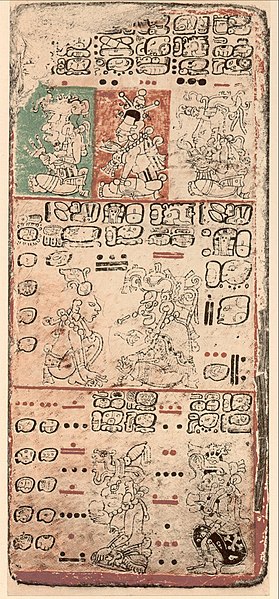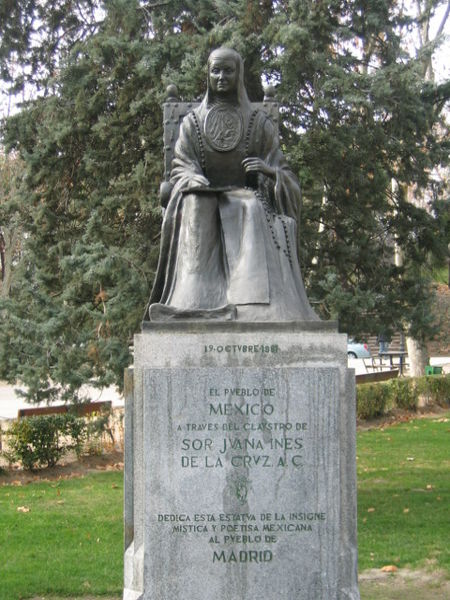Mexican literature stands as one of the most prolific and influential within Spanish-language literary traditions, alongside those of Spain and Argentina. This rich and diverse tradition spans centuries, encompassing a wide array of genres, themes, and voices that reflect the complexities of Mexican society and culture. From ancient indigenous myths to contemporary urban narratives, Mexican literature serves as a poignant reflection of the nation's essence, inviting readers to explore its rich history, diverse culture, and collective aspirations.
Main entrance of the Guadalajara International Book Fair 2002. The largest book fair of the Americas, and first largest book display in Mexico after Frankfurt's.
the interior of the José Vasconcelos Library.
Sor Juana, in 1772 by Andrés d'Islles (Museum of the Americas, Madrid). Her outspoken opinions granted her lifelong names such as, "The Tenth Muse", "The Phoenix of America", or the "Mexican Phoenix".
Page 9 of the Dresden Codex (from the 1880 Förstemann edition). It is located in the museum of the Saxon State Library Dresden, Germany.
Juana Inés de Asbaje y Ramírez de Santillana, better known as Sor Juana Inés de la Cruz, was a colonial Mexican writer, philosopher, composer and poet of the Baroque period, as well as a Hieronymite nun, nicknamed "The Tenth Muse" and "The Phoenix of America" by her contemporary critics. As a Spanish-criolla from the New Spain, she was among the main American-born contributors to the Spanish Golden Age, alongside Juan Ruiz de Alarcón and Garcilaso de la Vega "el Inca", and is presently considered one of the most important female authors in Spanish language literature and the literature of Mexico.
Juana Inés de la Cruz
Hacienda of Panoaya in Amecameca, residence of the Ramírez de Santillana family.
Manuscript page from Libro de professiones y elecciones de prioras y vicarias del Convento de San Gerónimo, 1586–1713, which Sor Juana signed in ink and her own blood
Statue of Sor Juana Inés in Madrid, Spain.








